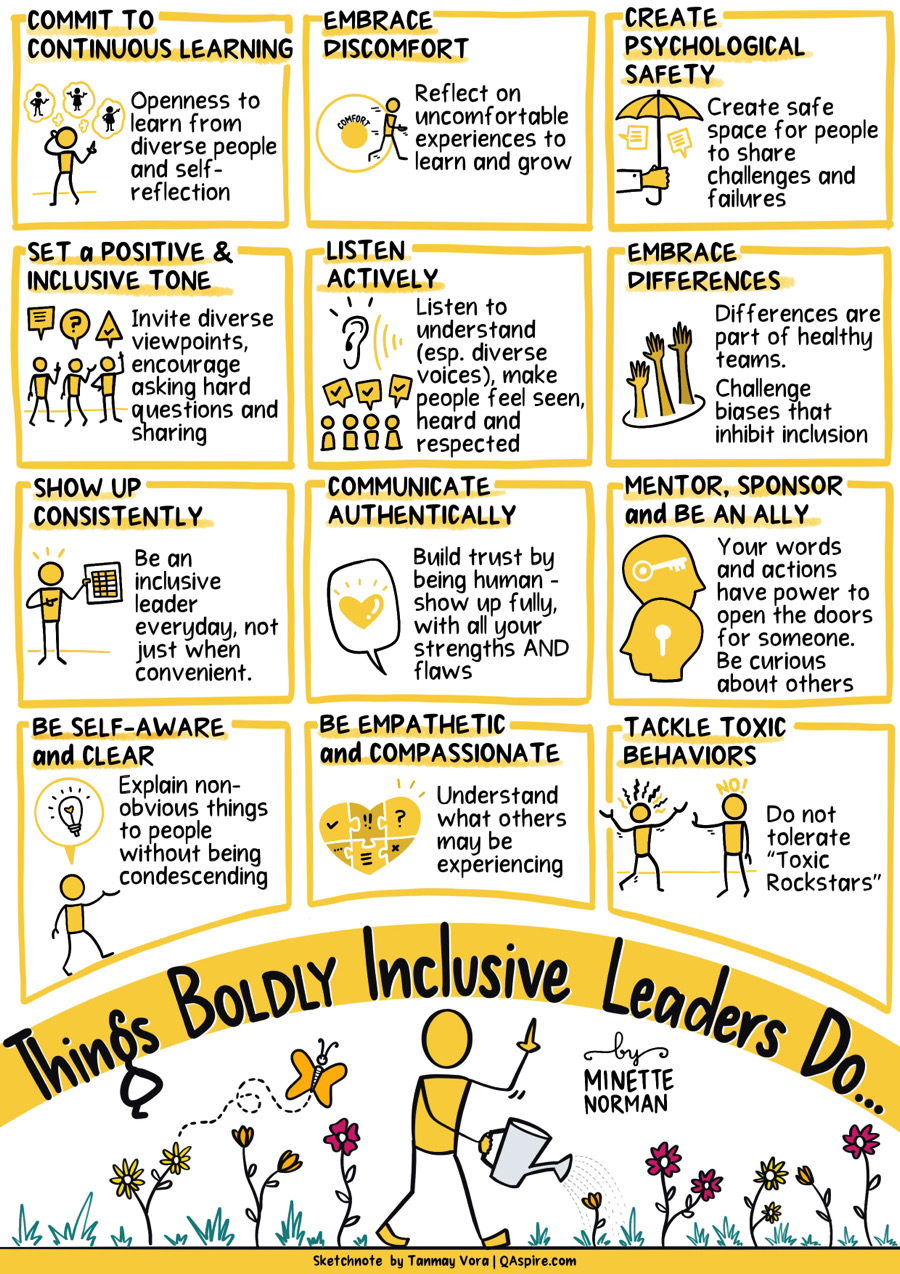How to be a Boldly Inclusive Leader
Practicing Inclusion and having diverse leadership can have transformative impact on company performance. This post talks about boldly inclusive leadership.
Tanmay Vora
In today’s world of work, being inclusive as a leader isn’t optional. In many companies I work with and consult, inclusion is used as a mere buzzword that doesn’t translate into any tangible behavioral change. The reason I feel leaders who preach inclusion and not practice it is because it is hard. Paying lip service to inclusion may give you some brownie points, but practicing inclusion leads to remarkable results.
Practicing Inclusion is Transformative
When Satya Nadella took charge as Microsoft’s CEO, the company was struggling with fairly rigid culture and stagnation. Nadella emphasized the importance of being a learning leader, adopting a growth mindset and working collaboratively with empathy. He worked hard at breaking down silos, encouraged employees to learn from each other, be customer centric, embrace diverse perspectives and work as one team to accomplish common goals. He conducted regular town-halls, institutionalized mentoring programs, conducted open forums to elicit ideas and concerns.
“Inclusion is not a matter of political correctness. It is the key to growth.”
– Jesse Jackson
The culture shifted over the years, so did the outcomes. Microsoft’s Azure cloud platform was accomplished through a rigorous cross-functional collaboration. Under Nadella’s leadership, Microsoft transformed into a dynamic and forward-thinking organization resulting in growth and innovation.
Nadella’s story underlines what research from McKinsey & Co. suggests: That companies with diverse leadership are 33% more likely to achieve above-average profitability.
The Boldly Inclusive Leader
In this context, I read Minette Norman’s book “The Boldly Inclusive Leader” with great interest. The book is a compelling guide for leaders to foster a more inclusive workplace. Norman provides actionable strategies and insights to build an inclusive culture through foundations of continuous learning, active listening, authentic communication, and creating psychologically safe environment for people to thrive. For me, Norman’s insights on being self-aware and being willing to embrace discomfort stood out. She reframes difficult experiences as “learning opportunities” and encourages leaders to reflect on their biases when dealing with people.
A Sketchnote on What Boldy Inclusive Leaders Do
The book is a must read if you are looking for a powerful and actionable guide to being more inclusive. Here is a sketchnote synthesizing some of the key ideas that truly stood out for me:

Updated: Visual Leadership Pack HD Sketchnotes
If you liked the sketchnote summary above, check out the Visual Leadership Pack of HD Sketchnotes – a compilation of high-resolution sketchnotes with 90+ powerful (and timeless) ideas to elevate your leadership and learning game.
